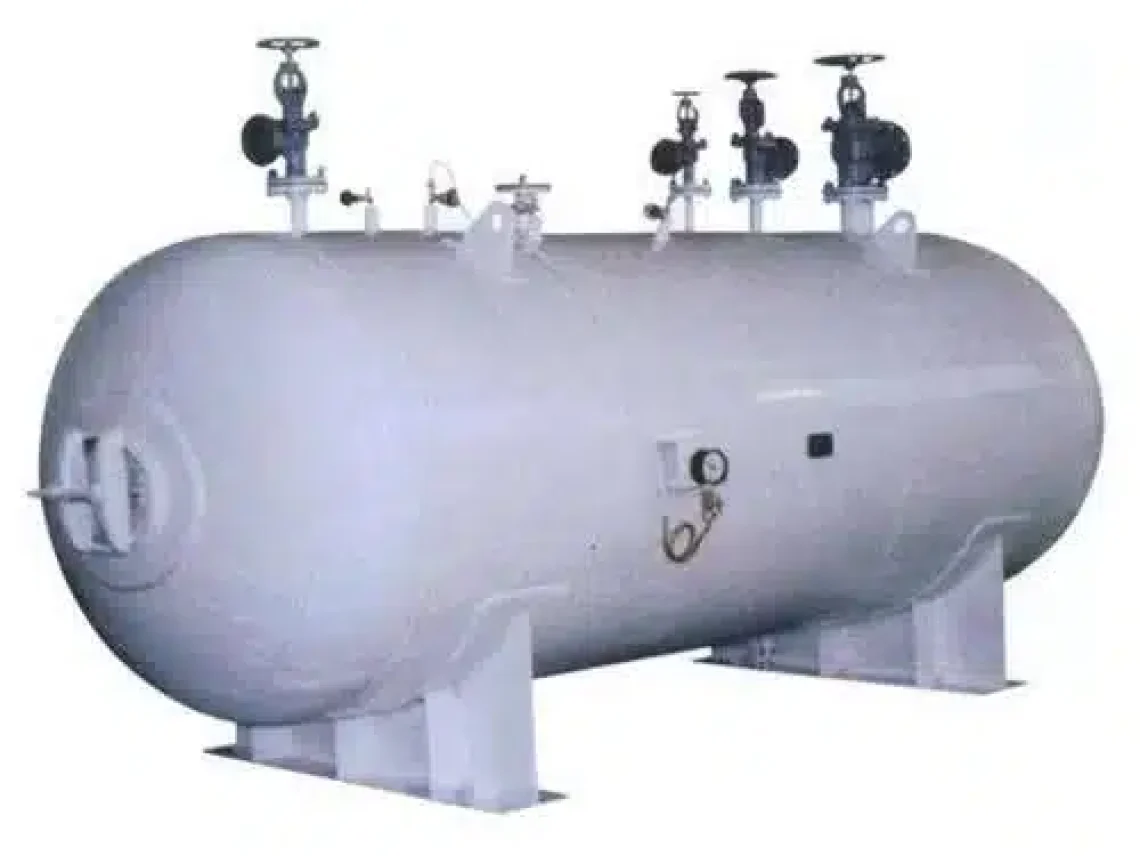Air Receiver Pressure Testing

Table of Contents
ToggleIntroduction to Air Receiver Pressure Testing
Overview of Air Receivers in Pressure Systems
Air receivers play a pivotal role in pressure systems, acting as reservoirs that store compressed air before it is distributed for use. These vessels mitigate pulsations from the compressor, contributing to system stability and efficiency. At Red River, each air receiver is designed and built with the utmost precision to ensure it meets the demands of your specific applications, from oil and gas to power generation and beyond.
Standards and Regulations for Testing Air Receivers
ASME Guidelines and Requirements
At Red River, our air receivers are tested according to the rigorous standards set forth by ASME, which specify the minimum testing pressures and safety protocols required. Compliance with these standards is not just about meeting legal requirements—it’s about exceeding them to ensure the safety and reliability of your pressure vessels.
Compliance and Safety Regulations
Navigating the complex landscape of compliance and safety regulations can be daunting. At Red River, we take on this challenge for you. Our team stays abreast of the latest regulations and safety protocols to ensure that every air receiver we produce not only meets but often exceeds the required safety standards.
How Pressure Testing is Performed
Step-by-Step Process of Pressure Testing
The pressure testing process at Red River is meticulously planned and executed. Our certified technicians follow a detailed protocol that includes filling the air receiver with water, pressurizing the system, and carefully monitoring for any signs of distress or failure. This hydrostatic test is critical for verifying the structural integrity of the vessel.
Tools and Equipment Used in Testing
Utilizing state-of-the-art tools and equipment, our technicians are equipped to perform accurate and reliable pressure tests. From digital pressure gauges to advanced monitoring systems, we ensure every test is conducted with precision, providing you with peace of mind that your air receivers are ready to perform under pressure.
Need a reliable partner?
Frequently Asked Questions About Air Receiver Pressure Testing
What factors determine the testing pressure for an air receiver?
The testing pressure of an air receiver is primarily determined by its maximum allowable working pressure (MAWP). This is set higher than the MAWP, typically at a minimum of 1.3 times the operational pressure, to ensure a margin of safety. Other factors include the material used in the air receiver’s construction, the environmental conditions it will be exposed to, and the specific requirements of the industry it will be used in.
How often should air receivers be retested to ensure ongoing safety and compliance?
Industry best practices suggest that air receivers should undergo pressure retesting at intervals recommended by the manufacturer or as mandated by regulatory authorities. Typically, retesting is recommended every two to five years. However, this can vary based on the operating conditions, such as exposure to corrosive environments or extreme temperatures, which might necessitate more frequent testing.
Can an air receiver fail a pressure test, and what are the implications?
Yes, an air receiver can fail a pressure test. Common reasons for failure include the presence of cracks, corrosion, or structural weaknesses that manifest under high pressure. If an air receiver fails its pressure test, it must be repaired or replaced to prevent operational hazards. Failing to address a failed pressure test can lead to dangerous situations, including potential vessel rupture.
What is the difference between hydrostatic and pneumatic pressure testing for air receivers?
Hydrostatic pressure testing involves filling the air receiver with water and then applying pressure, which is considered safer as it minimizes the risk of explosion. Pneumatic testing uses air or another gas, which can be more hazardous due to the compressibility of gases. Although faster, pneumatic testing is generally reserved for situations where hydrostatic testing is impractical.
Are there any innovations in air receiver pressure testing technology?
Recent innovations in pressure testing technology for air receivers include the use of digital sensors and automated systems that allow for continuous monitoring of pressure levels during the test. These systems can detect even minor fluctuations in pressure, improving the accuracy and safety of the tests. Additionally, the integration of Internet of Things (IoT) technology means tests can be monitored remotely, reducing the risk to human operators and providing real-time data analysis.
Table of Contents
ToggleRelated Blog Post
- What are air receivers made from?
- Is an air receiver a pressure vessel?
- What is the color code for air receiver?
- How do air receivers control moisture build up?
- What are the different types of air receivers?
- What are the safety requirements for air receivers?
- What is an air receiver used in an air compression system?
- What is the difference between air compressor and air receiver?
- What is the difference between wet air receiver and dry air receiver?
- What safety devices are air receivers equipped with and for what purpose?
Solutions
In the realm of industrial solutions, Red River emerges as a pioneer, offering a diverse range of custom-engineered products and facilities. Among our specialties is the design and production of Custom/OEM Pressure Vessels, meticulously crafted to meet individual client requirements, ensuring performance under various pressure conditions. Our expertise extends to the domain of prefabrication, where Red River leads with distinction.
The company excels in creating prefabricated facilities, modules, and packages, reinforcing its stance as a forerunner in innovation and quality. This proficiency is further mirrored in their Modular Skids offering, where they provide an array of Modular Fabricated Skid Packages and Packaged equipment. Each piece is tailored to client specifications, underlining their commitment to delivering precision and excellence in every project they undertake.
